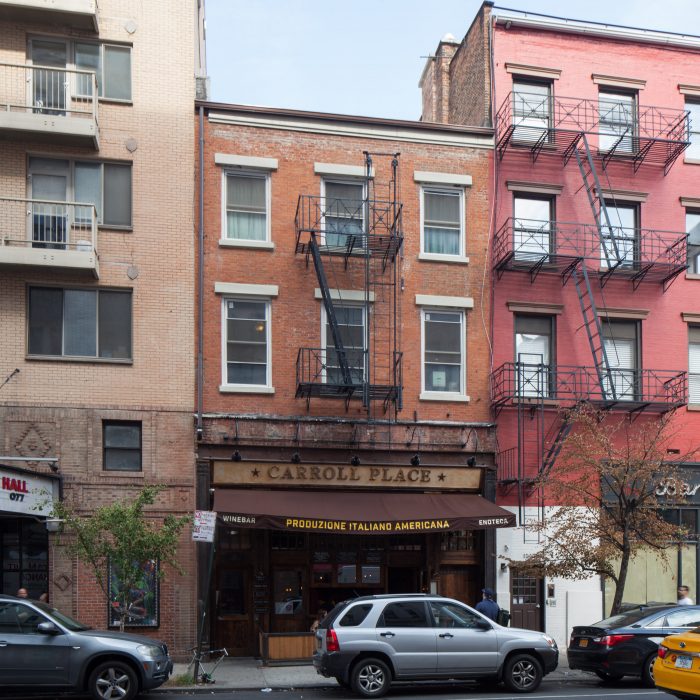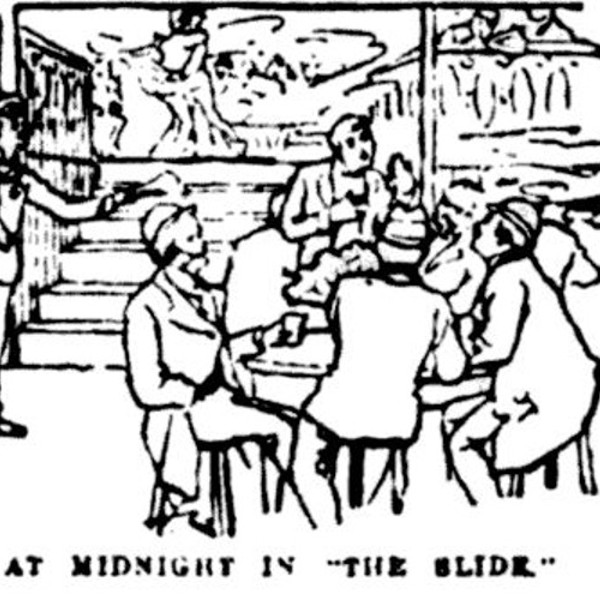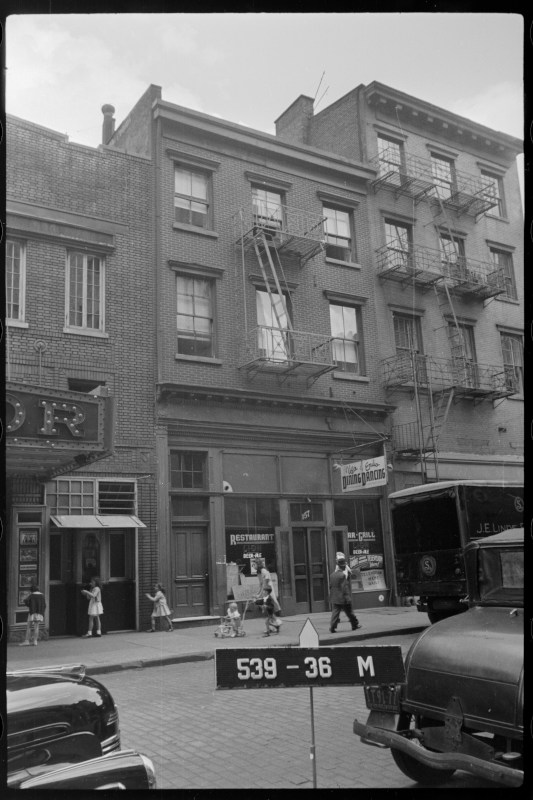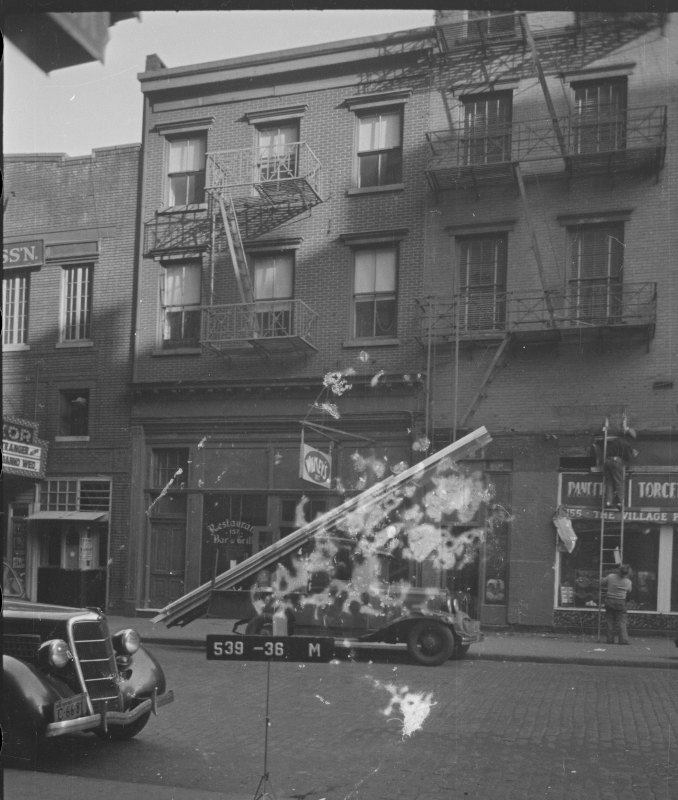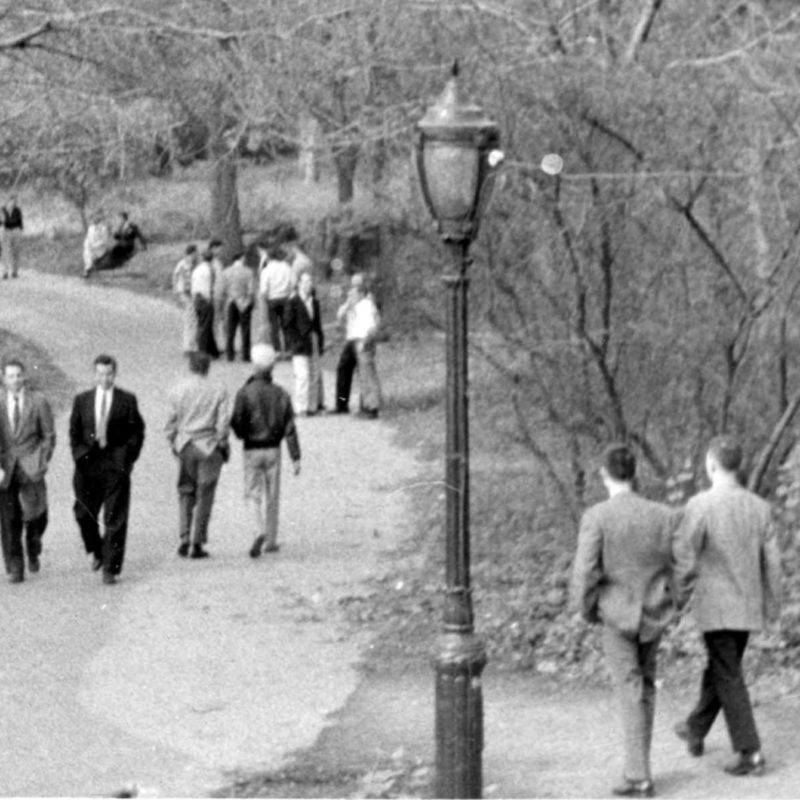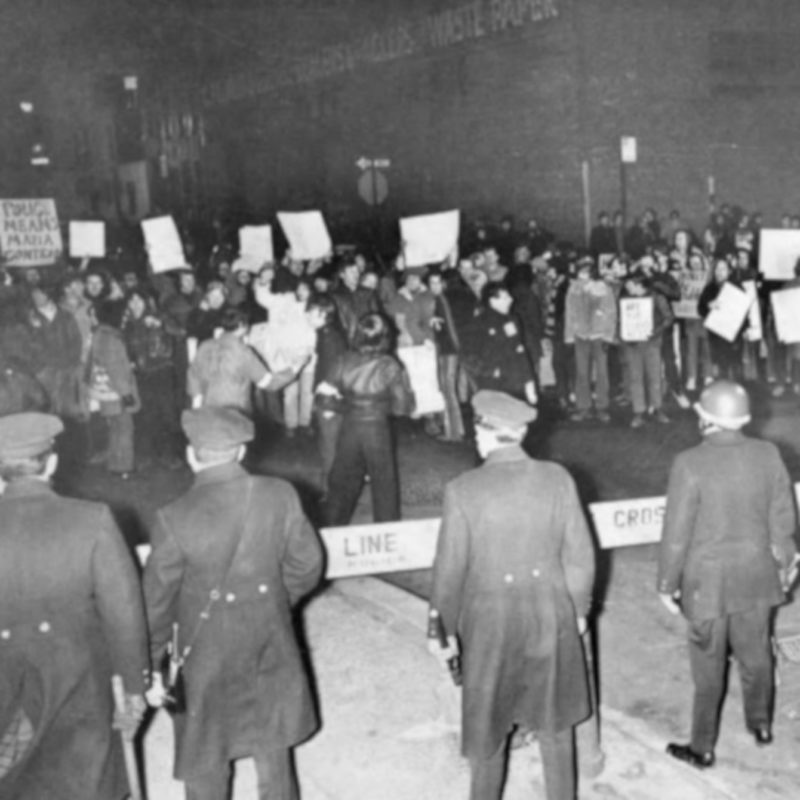overview
In the early 1890s, The Slide on Bleecker Street was known as New York’s “worst dive” for its “fairies,” young men who solicited other men.
It was closed by the police in 1892.
History
In his book Gay New York, George Chauncey identified the 1890s as one of the earliest periods in the city when one very specific, and “notorious,” aspect of the emerging gay male community – the subculture of flamboyantly effeminate “fairies” – became noticed by a wider public. He posited that this subculture was more fully and publicly integrated into working-class than middle-class New York.
Chauncey explains the definition of a fairy in this specific 19th-century context:
“The determinative criterion in the identification of men as fairies was not the extent of their same-sex desire or activity (their “sexuality”), but rather the gender persona and status they assumed. It was only the men who assumed the sexual and other cultural roles ascribed to women who identified themselves – and were identified by others – as fairies. The fairies’ sexual desire for men was not regarded as the singular characteristic that distinguished them from other men, as is generally the case for gay men today.” (pgs. 47-48)
While the Bowery, Lower East Side, and Tenderloin (a section of western Midtown roughly bounded at that time by 23rd and 42nd Streets and Fifth and Seventh Avenues) were the most notorious New York centers for commercialized vice and same-sex liaisons at this time, there were also such spots on Bleecker Street in Greenwich Village. Upper middle-class men, and some women, were attracted to downtown, in part to witness the “depravity” of the lower classes and thus to be scandalized or titillated (or both).
The Slide was popularly identified by 1890 as New York’s “worst dive” because of its fairies. A “slide,” in prostitutes’ jargon of the time, was “an establishment where male homosexuals dressed as women and solicited men,” according to Chauncey. Contemporary newspapers, purporting to defend the public’s morals, spotlighted the most sensational aspects of this underworld. The Slide was closed by police in 1892 and the proprietor convicted of keeping a “disorderly house.”
Author Edmund White, who lived at 83-85 MacDougal Street from about 1962 to 1965, included The Slide in a scene in his historical novel Hotel de Dream (2007).
Entry by Jay Shockley, project director (March 2017).
NOTE: Names above in bold indicate LGBT people.
Building Information
- Architect or Builder: Unknown
- Year Built: 1835
Sources
George Chauncey, Gay New York: Gender, Urban Culture, and the Making of the Gay Male World, 1890-1940 (New York: Basic Books, 1994).
Jay Shockley, “The Lesbian, Gay, Bisexual and Transgender (LGBT) Community’s Presence in the South Village,” South Village Historic District Designation Report (New York: Landmarks Preservation Commission, 2013).
Do you have more information about this site?
This project is enriched by your participation! Do you have your own images of this site? Or a story to share? Would you like to suggest a different historic site?
